#NGC 691
Text
NGC 691 Galaxy
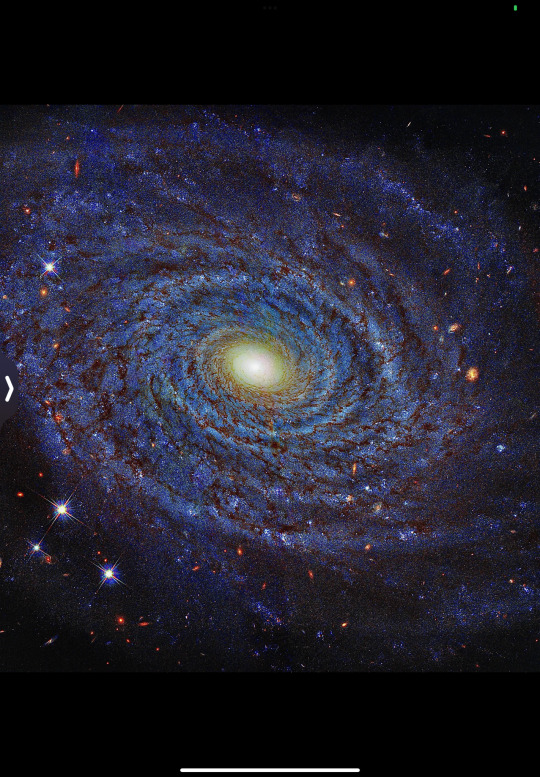
#galaxies#galaxy#astrophotography#astronomy#astronomers#universe#nasa#nasa photos#astrophysics#outer space#nasawebb#hubble space telescope#i love astronomy#astronomy facts#astrography#astrobiology#astro community#astro notes#astro observations#astroblr#astrology observations#astro boy#planetary science#science facts#space science#science#space exploration#space#cosmos#space travel
381 notes
·
View notes
Photo

Spiral Galaxy NGC 691 by NASA Hubble https://flic.kr/p/2ni9KHz
248 notes
·
View notes
Text
The stars, like dust...
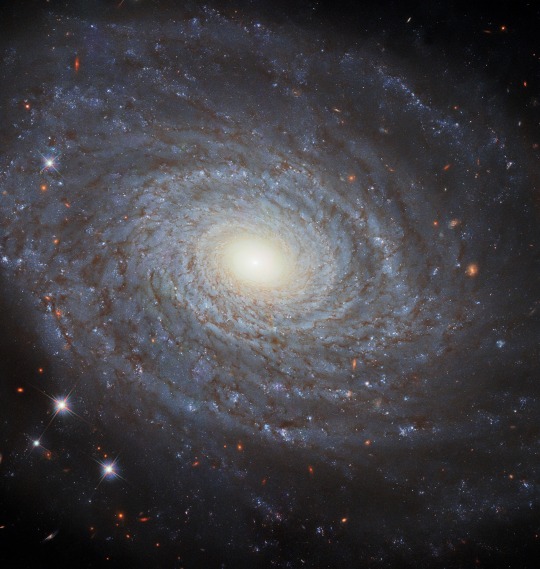
Spiral galaxy NGC 691, 119 million light-years away, as seen by the Hubble Space Telescope Wide Field Camera 3.
The Universe is Amazing !!!
8 notes
·
View notes
Photo


1st image: A representation of the evolution of the universe over 13.77 billion years. The far left depicts the earliest moment we can now probe, when a period of “inflation” produced a burst of exponential growth in the universe. (Size is depicted by the vertical extent of the grid in this graphic.) For the next several billion years, the expansion of the universe gradually slowed down as the matter in the universe pulled on itself via gravity. More recently, the expansion has begun to speed up again as the repulsive effects of dark energy have come to dominate the expansion of the universe. Credit: NASA’s Goddard Space Flight Center
2nd image: This collection of 36 images from NASA’s Hubble Space Telescope features galaxies that are all hosts to both Cepheid variables and supernovae. These two celestial phenomena are both crucial tools used by astronomers to determine astronomical distance, and have been used to refine our measurement of the Hubble constant, the expansion rate of the universe.
The galaxies shown in this photo (from top row, left to bottom row, right) are: NGC 7541, NGC 3021, NGC 5643, NGC 3254, NGC 3147, NGC 105, NGC 2608, NGC 3583, NGC 3147, Mrk 1337, NGC 5861, NGC 2525, NGC 1015, UGC 9391, NGC 691, NGC 7678, NGC 2442, NGC 5468, NGC 5917, NGC 4639, NGC 3972, The Antennae Galaxies, NGC 5584, M106, NGC 7250, NGC 3370, NGC 5728, NGC 4424, NGC 1559, NGC 3982, NGC 1448, NGC 4680, M101, NGC 1365, NGC 7329, and NGC 3447.
Credit: NASA, ESA, Adam G. Riess (STScI, JHU)
Mystery of Universe’s Expansion Rate: Hubble Data Shows That “Something Weird” Is Going On
Science history will record that the search for the expansion rate of the universe was the great Holy Grail of 20th-century cosmology. Without any observational evidence for space expanding, contracting, or standing still, we wouldn’t have a clue as to whether the universe was coming or going. Furthermore, we wouldn’t have any idea about its age either – or in fact, if the universe was eternal.
The first act of this revelation came when, a century ago, American astronomer Edwin Hubble discovered myriad galaxies outside of our home galaxy, the Milky Way. And, the galaxies weren’t standing still. Hubble found that the farther a galaxy is, the faster it appears to be moving away from us. This could be interpreted as the uniform expansion of space. Hubble even said that he studied the galaxies simply as “markers of space.” However, he was never fully convinced of the idea of a uniformly expanding universe. He suspected his measurements might be evidence of something else more oddball going on in the universe. ...
36 notes
·
View notes
Photo

A dazzling Hubble collection of supernova host galaxies Spanning from 2003 to 2021, this collection of images from the NASA/ESA Hubble Space Telescope features galaxies that are all hosts to both Cepheid variables and supernovae. These two celestial phenomena are both crucial tools used by astronomers to determine astronomical distance, and have been used to refine our measurement of Hubble's constant, the expansion rate of the universe Each of the images in this special collection features a spiral galaxy that hosts both Cepheid variables and a special class of supernovae, two remarkable stellar phenomena that on the face of it do not have much in common: Cepheid variables are pulsating stars that regularly brighten and dim and type Ia supernovae are the catastrophic explosions that mark the death throes of a hot, dense white dwarf star. However, both can be used by astronomers to measure the distance to an astronomical object. Establishing the distance of a celestial body is an enormous challenge for astronomers; it can be difficult to distinguish between objects that are dim and relatively close to the Earth and those which are bright and distant. To help overcome this challenge, astronomers have developed what is known as the cosmic distance ladder, a series of distance-determining methods, organized by the relative distances that they can measure. Two important steps in this ladder are Cepheid variables and supernovae: Cepheid variables because the period with which they pulsate can be used to calculate their distance; and supernovae because every type Ia supernova explosion reaches the same known luminosity, meaning that its brightness as viewed from Earth can be used to derive its distance. All the galaxies presented in this collection host Cepheid variables and have had at least one type Ia supernova explosion occur in them within the last 40 years. One of the galaxies, NGC 2525, even contained a supernova that was caught in real time in a remarkable timelapse. Even before it was launched, one of Hubble's main science goals was to observe Cepheid variables and supernovae. These observations can help measure the expansion rate of the Universe, a value which astronomers call the Hubble constant. Generations of astronomers have refined this value over almost 30 years using data from more than 1,000 hours of Hubble time. Most recently, a team of astronomers called SH0ES used observations of all the supernovae seen by Hubble in the last 40 years —including those in the galaxies pictured here—to determine the value of the Hubble constant as 73.04 ± 1:04 kms-1 Mpc-1. "This is what the Hubble Space Telescope was built to do. You are getting the standard measure for the Universe from the gold standard of telescopes," said Noble Laureate Adam Riess of Johns Hopkins University in Baltimore, Maryland, who leads the SH0ES Team. "This is Hubble's magnum opus." Interestingly, the expansion rate determined from observational data from telescopes is significantly different from the value predicted by our current standard cosmological model of the Universe. The richness of the Hubble data means that this is vanishingly unlikely to have happened by a chance selection of misleading observations. The wide collection of Cepheid variable and supernovae-hosting galaxies observed by Hubble were picked out in six different proposals for observing time with the telescope. Whilst these proposals were part of Hubble's decade-long quest to precisely measure the expansion rate of the Universe, the observations also produced a spate of beautiful galactic portraits, such as those of NGC 5643, NGC 7329, NGC 105 and NGC 3254. Still others have previously been featured in Hubble Pictures of the Week and other releases, including NGC 691, NGC 1559, NGC 2525, NGC 2608 and NGC 3147.
2 notes
·
View notes
Photo
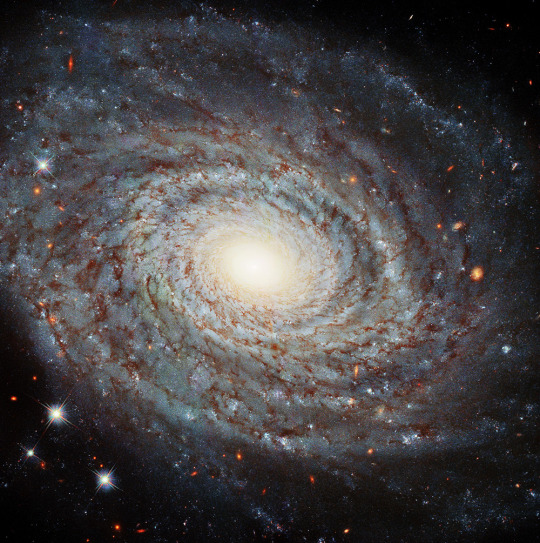
Spiral galaxy NGC 691 in detail
#space#nasa#hubble telescope#galaxy#planet#stars#night#planets#sky#astronomy#ngc 691#astrophotography#solar system#nebula#spiral galaxy#universe#cosmos
721 notes
·
View notes
Photo
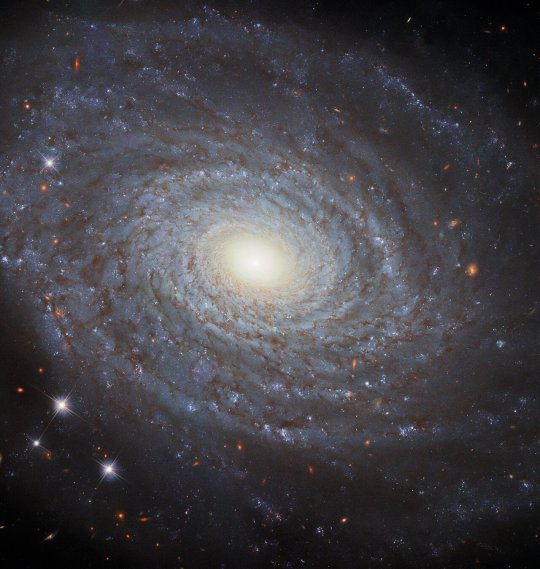
Grand Fluffy Spiral
59 notes
·
View notes
Photo

NGC 691 Group in Aries.
Credit: Warren Keller
#Space#Astronomy#Astrophotography#NGC 691#Aries#Warren Keller#billionsandbillions.com#Stars#Universe#Cosmos#Night Sky#Galaxy#Constellation#Solar System#Deep Space#Science#Wonders#Photography#Nebula#Colors#Glow#Sparkle#Light
400 notes
·
View notes
Photo
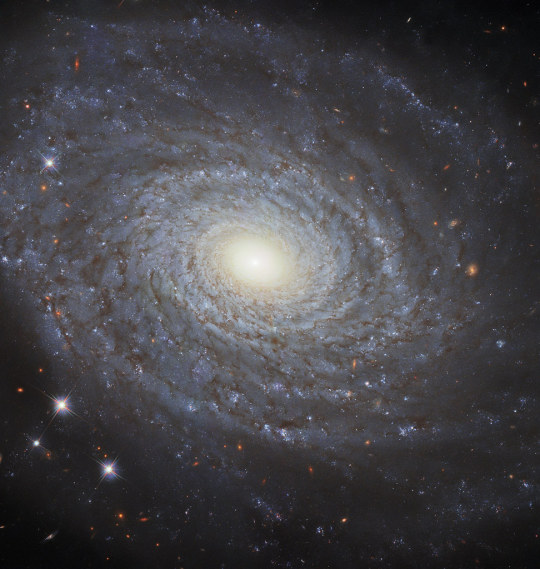
The eponymous NGC 691 by europeanspaceagency
442 notes
·
View notes
Photo
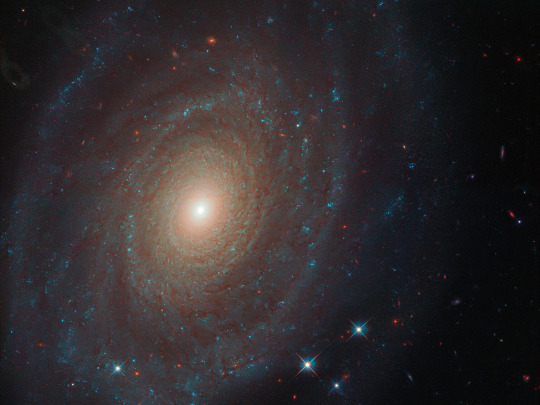
NGC 691 - 120 million light-years away from home via /r/spaceporn https://ift.tt/33k9EUE
0 notes
Photo

The eponymous NGC 691
102 notes
·
View notes
Photo
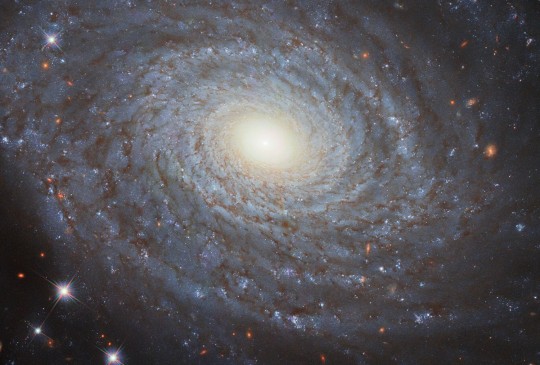
Day 17 of the 2021 Hubble Space Telescope Advent Calendar, one of 25 photos (eventually). A Beautiful Spiral. This image features the spiral galaxy NGC 691, part of a group of gravitationally bound galaxies that lie about 120 million light-years from Earth. The galaxy, first discovered in 1786, is about 130,000 light years across. (ESA / Hubble & NASA, A. Riess et al.)
9 notes
·
View notes
Text

^This Hubble image shows the spiral galaxy NGC 691. The image includes optical and infrared observations from Hubble’s Wide Field Camera 3 (WFC3) instrument. Four filters were used to sample various wavelengths. The color results from assigning different hues to each monochromatic image associated with an individual filter. Image credit: NASA / ESA / Hubble / A. Riess / M. Zamani.
NGC 691 is an unbarred spiral galaxy located some 125 million light-years away in the constellation of Aries.
This galaxy was discovered by the German-born British astronomer William Herschel on November 13, 1786.
It is the foremost member of the NGC 691 group, a collection of nine galaxies of varied shapes and colors.
Also referred to as LEDA 6793, UGC 1305 and TC 448 in various astronomical catalogues, NGC 691 has a diameter of 130,000 light-years.
It features a multiple ring structure, with three rings recognized in the infrared light.
“Objects such as NGC 691 are observed by Hubble using a range of filters,” Hubble astronomers explained.
“Each filter only allows certain wavelengths of light to reach Hubble’s Wide Field Camera 3 (WFC3).”
“The images collected using different filters are then colored by specialized visual artists who can make informed choices about which color best corresponds to which filter.”
“By combining the colored images from individual filters, a full-color image of the astronomical object can be recreated,” they added.
“In this way, we can get remarkably good insight into the nature and appearance of these objects.”
http://www.sci-news.com/astronomy/hubble-image-ngc-691-09709.html
7 notes
·
View notes
Text
Hubble Spots a Spiral With a Past
NASA - Hubble Space Telescope patch.
Feb. 28, 2020
This image of an archetypal spiral galaxy was captured by the NASA/ESA Hubble Space Telescope.
The subject of this image is known as NGC 691, and it can be found some 120 million light-years from Earth. This galaxy was one of thousands of objects discovered by astronomer William Herschel during his prolific decades-long career spent hunting for, characterizing and cataloging a wide array of the galaxies and nebulas visible throughout the night sky — almost 200 years before Hubble was even launched.
The intricate detail visible in this image would likely be extraordinary to Herschel. Hubble was able to capture an impressive level of structure within NGC 691’s layers of stars and spiraling arms — all courtesy of the telescope’s high-resolution Wide Field Camera 3.
Hubble Space Telescope (HST)
For more information about Hubble, visit:
http://hubblesite.org/
http://www.nasa.gov/hubble
http://www.spacetelescope.org/
Text Credits: ESA (European Space Agency)/NASA/Rob Garner/Image, Animation, Credits: ESA/Hubble & NASA, A. Riess et al.
Greetings, Orbiter.ch
Full article
14 notes
·
View notes
Photo

NGC 691 - 120 million light-years away from homespaceporn
1 note
·
View note
Photo
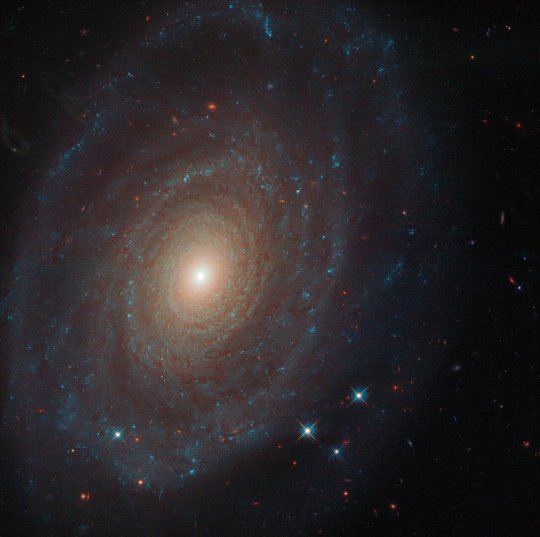
Centuries before Hubble This image of an archetypal spiral galaxy was captured by the NASA/ESA Hubble Space Telescope. The subject of this image is known as NGC 691, and it can be found some 120 million light-years from Earth. This galaxy was one of thousands of objects discovered by astronomer William Herschel during his prolific decades-long career spent hunting for, characterising, and cataloguing a wide array of the galaxies and nebulae visible throughout the night sky — almost 200 years before Hubble was even launched. The intricate detail visible in this Picture of the Week would likely be extraordinary to Herschel. Hubble was able to capture an impressive level of structure within NGC 691’s layers of stars and spiralling arms — all courtesy of the telescope’s high-resolution Wide Field Camera 3. ESA/Hubble & NASA, A. Riess et al.; CC BY 4.0
69 notes
·
View notes